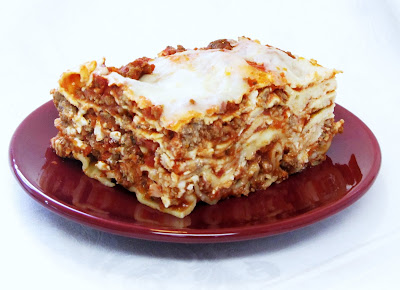Sour Cream & Chive Potato Bread
.jpg) Fresh chives from the garden, sour cream, local eggs, butter and mashed potatoes combine to make a deliciously light loaf of bread. The dough also makes excellent dinner rolls. The loaves or rolls can be shaped and refrigerated overnight and baked just before serving.
Fresh chives from the garden, sour cream, local eggs, butter and mashed potatoes combine to make a deliciously light loaf of bread. The dough also makes excellent dinner rolls. The loaves or rolls can be shaped and refrigerated overnight and baked just before serving. Sour Cream & Chive Potato Bread
Stir together in a large bowl:3 cups unbleached bread flour or all-purpose flour (you will need an additional 3-4 cups of flour)
½ cup powdered milk
2 tablespoons sugar
1 tablespoon salt
1 teaspoon onion powder
3 teaspoons instant yeast (also sold as Bread Machine Yeast or Quick-Rise Yeast)
1/4 cup minced fresh chives (½ to 3/4 oz)
In a medium bowl combine:
2 large eggs, lightly beaten
1 cup mashed potatoes*
2 tablespoons butter, softened
1 cup sour cream
1 cup water** (I use the potato water left from boiling the potatoes)
*Note: If using leftover mashed potatoes that have added salt, you may want to decrease the salt measure slightly
**Note: If the potatoes are cold (leftovers), you will want to use very warm water. If you are boiling potatoes fresh for this recipe, you will need to let the mashed potatoes and potato water cool to room temperature.
Stir the wet mixture into the flour mixture with a large, sturdy spoon. Stir well until thoroughly combined. Gradually stir in the remaining 3-4 cups of flour, one cup at a time, to form a soft dough. Turn out onto a well-floured board and knead until smooth and elastic, adding enough flour to keep dough from sticking to the board and your hands. Kneading by hand will take 8 to 12 minutes. (You could also knead in a heavy-duty mixer. This will take 6-8 minutes.) You want to knead the dough until you can pull a small piece into a transparent sheet without it tearing. This is called the membrane or window-pane test and tells you the gluten is fully-developed.
Place dough in an lightly oiled bowl. Cover and let rise at room temperature until doubled in bulk, about 1 hour to 1 hour and 15 minutes. Turn out onto a floured board. Fold the top down, bottom up and sides in overlapping each other. Replace in bowl, smooth side up, cover and let rise until doubled again, about 30-45 minutes.
Divide into 3 loaves. (You could also make 2 round loaves and a dozen dinner rolls!) Shape into rounds, pinching bottom to seal. Place in well-floured cloth-lined baskets (a floured cloth napkin in a bowl works well too), seam side up, cover lightly and let rise until doubled, about 30-40 minutes. (At this point, you may spray the tops lightly with cooking spray, cover tightly and refrigerate several hours or overnight. They will proof in the refrigerator. Take them out of the frig when you begin preheating the oven the next day and let rest at room temperature until you are ready to bake.)
Meanwhile, preheat a baking stone in the oven to 425 degrees for at least 30 minutes. When the loaves have doubled, uncover and turn them out onto a peel (or cookie sheet) that has been sprinkled with cornmeal or semolina. Slash the tops and slide them onto the hot stone. Bake 20 to 25 minutes for loaves, 12 to 15 for rolls (a bit longer if dough has been refrigerated) until nicely browned and hollow-sounding when thumped on the bottom. The internal temperature should reach at least 180 degrees. This bread will not have a crispy crust because of all the dairy products in the dough.

